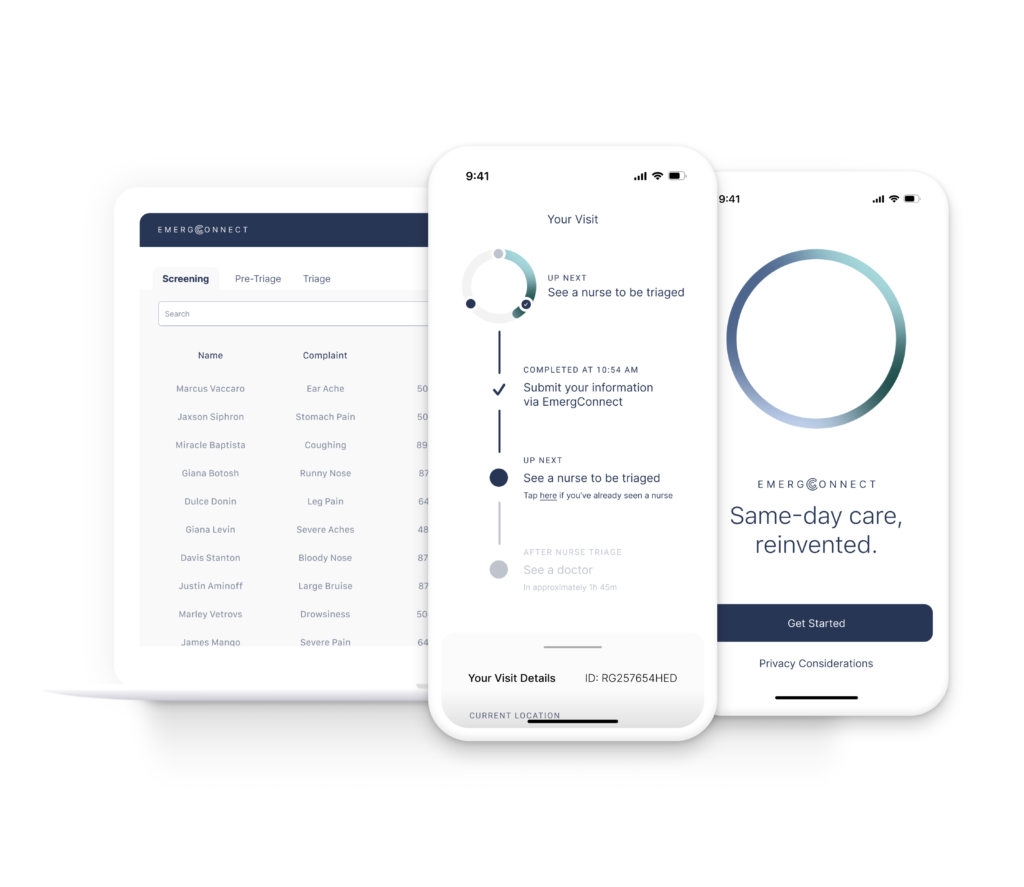WHGH first in region to pilot smart triage technology in its busiest department

West Haldimand General Hospital (WHGH) is bringing innovation to the front doors of its busiest department.
As of May 2025, WHGH has become the first hospital in the region to pilot EmergConnect — a secure, Canadian-made digital triage tool that helps patients receive faster, more informed care in the Emergency Department.
When patients arrive at the Emergency Department, they can now use their smartphone or a hospital-provided tablet to:
- Enter their symptoms
- Share basic medical history
- Indicate how severe their condition feels
All before speaking with a triage nurse.
This information goes directly to our care team, giving them a clearer picture of your condition and helping them respond sooner and more effectively.
“We’re proud to bring forward smart solutions that make care safer, faster, and more patient-centred—especially in a rural setting,” said Kim Mullins, Vice President, Clinical, and Chief Nursing Executive at WHGH. “Tools like EmergConnect enhance our triage process while preserving the clinical expertise of our nursing staff.”
The Emergency Department at WHGH sees nearly 19,000 visits a year. This new tool helps prioritize care more efficiently while keeping patients informed and involved in their care from the moment they walk through the door.
Patients who prefer not to use the digital check-in can still speak directly with a triage nurse.
There is no cost to use the tool, and all personal information is managed securely in accordance with Ontario’s health privacy legislation.
This pilot is supported by the Coordinated Accessible National (CAN) Health Network, a federally funded initiative that connects Canadian healthcare organizations with made-in-Canada innovations.
“Innovation is a key priority in our strategic plan,” said Todd Stepanuik, President and CEO of WHGH. “This partnership with EmergConnect modernizes how we deliver emergency care—making it faster, more efficient, and easier for patients from the moment they arrive.”
WHGH is an official “Edge” partner in the CAN Health Network, working to identify challenges and test scalable solutions that improve healthcare across the country.
“WHGH is showing that innovation doesn’t just happen in big cities,” said Ron Galaev, CEO of EmergConnect. “By being first in the region to pilot EmergConnect, they’re setting a new standard for rural emergency care. We’re proud to partner with WHGH to bring smart, secure triage directly into patients’ hands the moment they walk through the door.”
Understanding Emergency Triage
WHGH uses the Canadian Triage and Acuity Scale (CTAS) to assess patients on arrival and ensure the most urgent cases are seen first:
- Level 1 – Resuscitation: Life-threatening conditions such as cardiac arrest
- Level 2 – Emergency: Symptoms of stroke, heart attack, or severe bleeding
- Level 3 – Urgent: Infections, moderate injuries, or urgent mental health needs
- Level 4 – Less Urgent: Sprains, minor fractures, mild pain
- Level 5 – Non-Urgent: Sore throats, rashes, or prescription renewals
Triage nurses are trained to assess each patient quickly and accurately based on this national standard.
Patients with non-urgent needs may wait longer. In these cases, alternative care options are available:
- Your family doctor
- Health811: Call or visit ontario.ca/health811 for 24/7 nurse advice
- Virtual Care: UrgentCareOntario.ca
- Pharmacists: Can assess and prescribe for minor conditions
WHGH remains committed to delivering timely, compassionate care—and to exploring innovations that improve the experience for every patient, every time.



